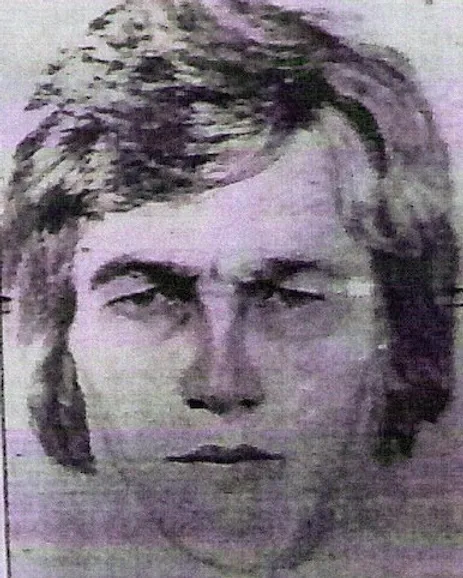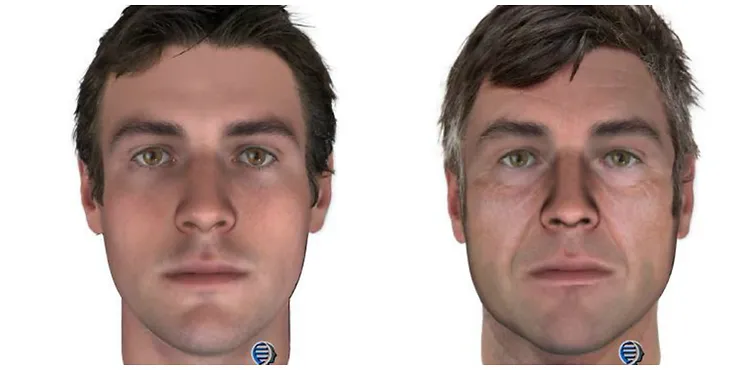On April 1st, 1988, eight-year-old April Tinsley, a second grader in Fort Wayne, Indiana, was enjoying an early dismissal from school. After eating lunch, she asked her mother if she could go to her friend’s house, just a few blocks away. Her mom agreed, asking April to call when she arrived at her friend’s house. April had walked to her friend’s house before on her own, and always called upon arriving. Her mother reminded her to take her umbrella because rain was expected around four that afternoon. To avoid getting caught in the rain, her mother asked April to be home before four, and April agreed. April walked the few blocks to her friend’s house, called her mother as she had promised, and spent the afternoon playing. When four o’clock came and went, April’s mother grew very concerned. Sadly, April never came home that day.

April Marie Tinsley was born on March 18th, 1980, in Fort Wayne, Indiana. She was her mother’s first and only child. April’s mom had always dreamed of having a little girl with blond hair, and that is exactly what she had with April. April was a smart, sweet, fun-loving first grader. She had lots of friends, many of which lived close by. She was a student at Fairfield Elementary School and a member of the children’s choir at the Faith United Methodist Church.
On the evening of April 1st, 1988, April failed to return home from playing with her friend. Her mother instantly feared for her daughter, who had never been late before. She called the mother of April’s friend, only to become more afraid. April’s friend stated that at 3pm, April left the park the two girls were playing at to go home. However, April realized she left her umbrella at her friend’s house, so headed to pick up the umbrella. Meanwhile, her friend went to another friend’s house, not accompanying April back to her house. The friend’s mother, however, said April never arrived and her umbrella was still at their home. Janet Tinsley panicked.
After searching for a few hours April without any luck, Janet Tinsley called the police and reported her daughter missing. She described April, a petite blond haired little girl. The eight-year-old was last seen wearing pink shoes, turquoise green pants with three pink hearts on them, light blue sweater, and a pink jacket. After searching a twenty-block radius, police were unable to find any trace of the little girl. Police suspected that April had been abducted.
Over the next three days, police and the Tinsley family searched for April. The entire community was fearful, wondering if a child abductor was stalking their neighborhood. On April 4th, 1988, just three days later, a jogger found the remains of a little girl forty feet off the side of a road. April was found twenty miles from her home, and she was positively identified by her clothing and facial recognition. April Tinsley had been abducted and murdered.
April was found fully clothed except for one of her shoes. Her other shoe was found down the road from where her body had been found on the opposite side of the street. Police suspected that the killer had dumped her body and began to drive away. As he drove away, he realized one of her shoes was still in his vehicle, so he tossed it out the car window. Who would commit such a terrible crime and why?
April’s autopsy showed that she had been strangled. The examination also showed that April had been sexually assaulted. DNA was collected from the sexual assault kit, but in 1988 DNA was not routinely utilized in criminal investigations. Police also suspected that the murderer lived in the Fort Wayne area because he was able to take her somewhere private and dumped her somewhere that someone from out of town would likely not be familiar with. However, there were no immediate suspects.

Some witnesses came forward to report possible sightings. One stated they saw a little girl matching April’s description walking in the area in which April was known to be walking. This witness said that a blue truck pulled up alongside the little girl and then pulled away shortly after. The witness did not hear or see a struggle, so they did not realize they had just witnessed an abduction. The witness believed it was possible that it was the little girl’s father. A sketch was developed based on this witness’s recollection of the man driving the truck. Another witness said there was a blue truck near the area where April’s body was found on April 4th, 1988. Police started searching for the driver of this truck.
The medical examiner believed that April had been killed one to two days prior to the discovery of her body and believed that her body had only been alongside the roadway for a few hours when it was discovered. The community of Fort Wayne was distraught following the news that an eight-year-old girl had been abducted, raped, and murdered while walking in a safe neighborhood in broad daylight. Mourners gathered on April 8th, 1988, at the Faith United Methodist Church for April’s memorial service. Weeks later, ninety members of the community formed an organization known as APRIL, Associated Parents Regional Independent League, with a goal of keeping children safe in the Fort Wayne community.
During the early part of the investigation, a thirty-four-year-old man known to be a part of a gang was identified by several witnesses as looking similar to the sketch developed by the eyewitness. That eyewitness later picked this man out of a line-up, identifying him as the man driving the blue truck. Other witnesses said this man often watched children playing in the park, had made comments about sexually assaulting children, and was a part of a satanic cult. Fear spread that April’s murder could have been part of a satanic sacrifice ceremony. This man did not own a blue truck, however, but did have access to one through a friend.
Despite the witnesses coming forward, police were unable to find any physical evidence to link this man to the murder. The murder did not show any evidence of being related to a satanic ceremony and nothing connected the man to the crime. Sex offenders in the community were investigated, but no evidence linked any of these people to the murder of April Tinsley, either. Police didn’t give up, but the case went cold.

On May 21, 1990, police responded to a report of a disturbing message scrolled onto a barn nearby Fort Wayne. The message, written in crayon, said, “I kill 8 year old April M Tinsley. Did you find her other shoe haha I will kill again”. Crayons were found near the barn. Police believed this message to be real because the fact that her other shoe was not found with her body was not a fact that was publicly released. The Fort Wayne community feared that two years later, the killer was preparing to strike again. Despite this, no suspects were identified.
No other leads developed for the next fourteen years. On Memorial Day weekend in 2004, four notes were found in the Fort Wayne area. The notes were written to little girls who were of similar age to April Tinsley at the time of her murder. One of the notes read, “Hi honey…. I’ve been watching you… I am the same person that kidnapped an rape an skill April Tinsley… You are my next victim… if you don’t report this to police an if I don’t see this in the paper tomorrow or on the local news I will blow up your house”. Included in the notes were used condoms containing semen and polaroid pictures of a male’s genitals.

These disgusting notes ignited fear. The letters were in the same handwriting with the same grammar and spelling mistakes as the killer had written on the barn in 1990. The killer delivered these notes to girls between ages five and nine, placing them on their bicycles or in the mailbox. DNA was collected from the used condoms and matches the DNA collected from April Tinsley’s murder in 1988. Police were in a race against time to find this man before he killed someone else’s daughter. It seemed the killer either wanted to be caught or sought attention from the media.
After releasing the content of these notes publicly, a young man came forward reporting that his father may be the killer. His father drove a blue truck back in 1988, painting it shortly after April Tinsley’s murder. The new suspect was a registered sex offender with a history of sexual assault on a child. He often used language such as “Hi honey” and “haha” according to the man’s son. His son also reported that his father lived within blocks of where April disappeared and often took lewd photos of himself with a polaroid camera. The man was brought in for questioning, explaining he was working on April 1st, 1988. It was odd that he remembered what he was doing sixteen years earlier on a specific day. Police learned the alibi was false, the man was not working on April 1st or April 4th, 1988. Police were confident they had found April’s killer.
Police collected a DNA sample from their suspect based upon the circumstantial evidence. The DNA did not match any known offenders in the system, but police were confident it would match their new suspect. When the DNA results came back, however, it was not a match. Despite the enormous amount of circumstantial evidence, this man was not April’s killer or the man stalking and leaving lewd noted for little girls in Fort Wayne.
In April of 2009, the television program America’s Most Wanted covered April’s story, hoping to identify her killer once and for all. There was, unfortunately, no new leads. Crime Watch Daily covered the crime in 2016, again generating no new clues. On The Case with Paula Zahn covered the story in 2018. This episode aired July 15th, 2018. That date would become a very important date.
In 2015, Fort Wayne police sent some of the DNA from the case to Parabon Nanolabs. This lab uses DNA to create a composite sketch of what the person likely looks like, called phenotyping. This sketch determined that the suspect was a white male of British or German descent with brown hair and hazel-colored eyes. The lab believes the suspect had very fair skin. This matched the original sketch based upon the eyewitness’s description.

Parabon Nanolabs also used the genealogy website GEDmatch to identify the suspect’s relatives. Now that many people freely provide their DNA for programs like Ancestry and 23&Me, forensic genealogy has become a new investigative tool. Genealogist CeCe Moore, famous for solving criminal cases with forensic genealogy, was brought in to investigate this case. Shew as able to narrow down the DNA matches found to two brothers, including a man named John D. Miller.
John D. Miller was a resident of Grabhill, Indiana. His neighbors described him as secluded and angry, Police investigated both John and his brother, collecting DNA from a condom in John’s discarded trash. It was a match. They had found April Tinsley’s killer. Police arrived at John D. Miller’s home on July 15th, 2018, just hours before the On The Case with Paula Zahn episode aired. Police asked John if he knew why they were there, to which he responded, “April Tinsley”. He confessed to the abduction, rape, and murder of April Tinsley more than thirty years before.

On December 7th, 2018, John D. Miller plead guilty to murder and child molestation. He was sentenced to fifty years in the Indiana Department of Corrections for the murder and an additional thirty years for child molestation. He will be eligible for parole in 2058, at which time he will be ninety-nine years old.
This case took thirty years and several advancements in forensic science to solve. It also took the dedicated efforts of nine investigators who never gave up. In May of 2019, these investigators became the recipients of the National Association of Police Organizations national policing award. The city of Fort Wayne dedicated a memorial garden to April Tinsley in her neighborhood, known as “April’s Garden”. The community of Fort Wayne is relieved that April’s killer is in prison, but the pain of this devastating crime will never be forgotten.
REFERENCES
On The Case with Paula Zahn (2018) Notes from a Killer. Season 17 Episode 1
